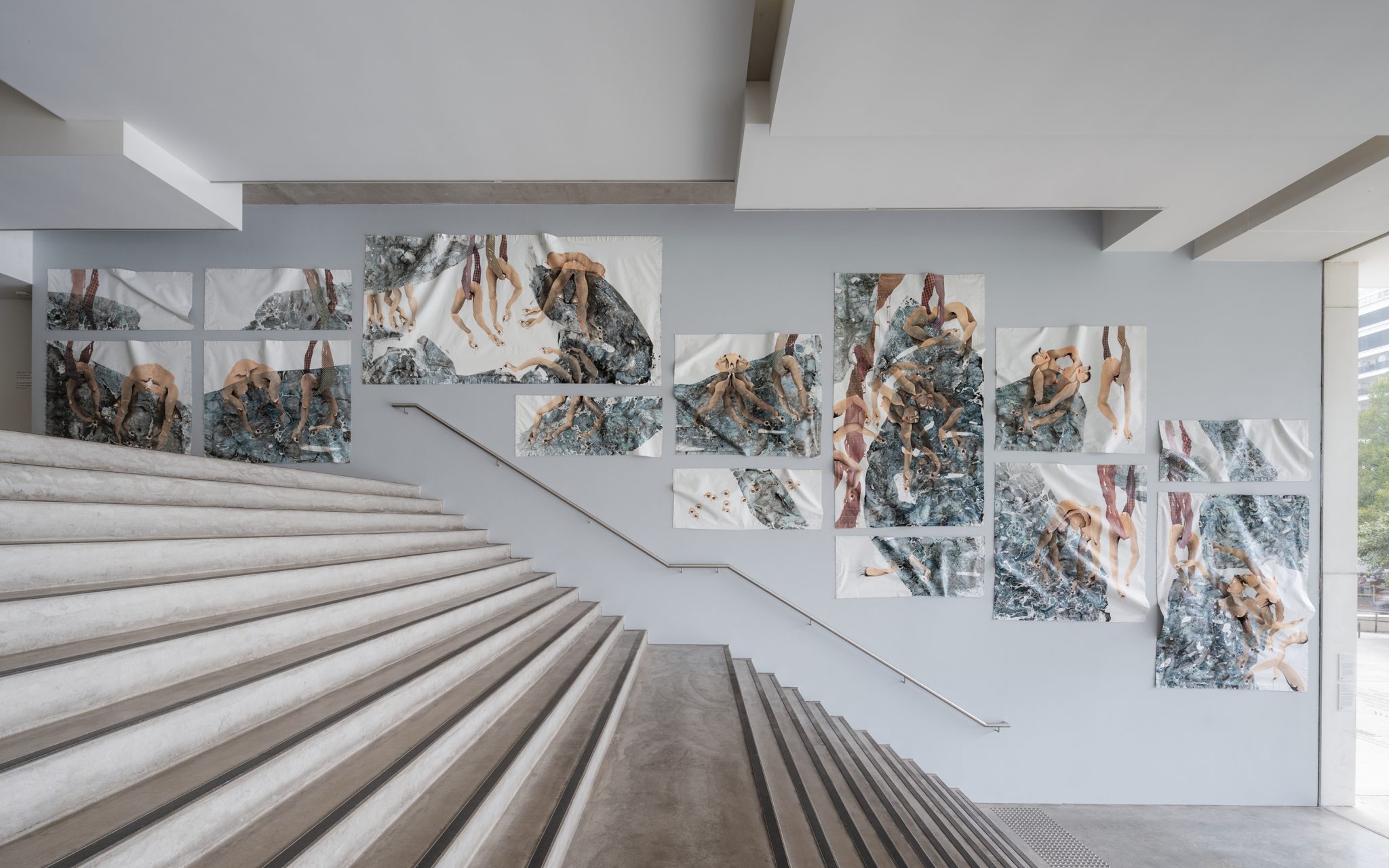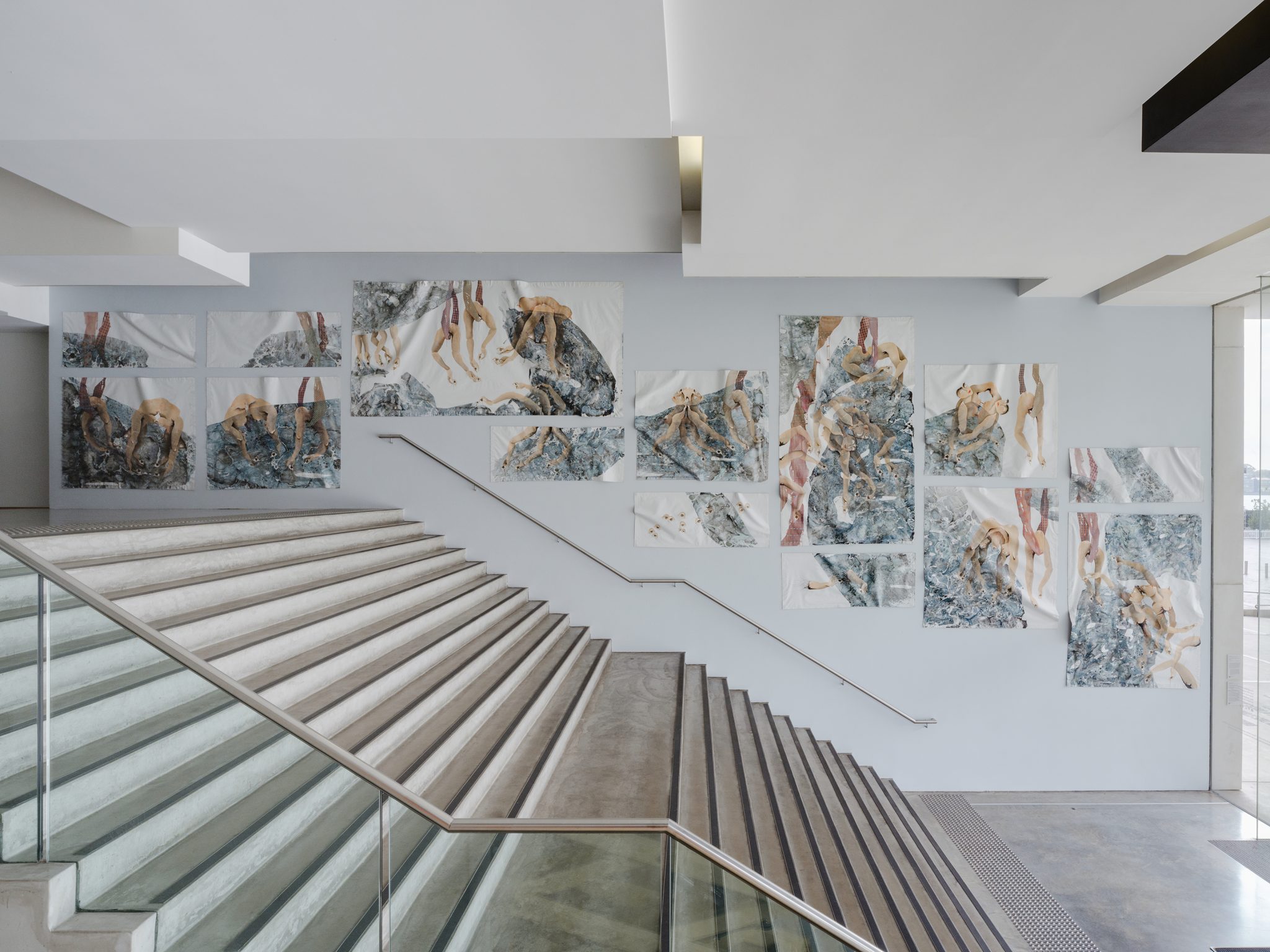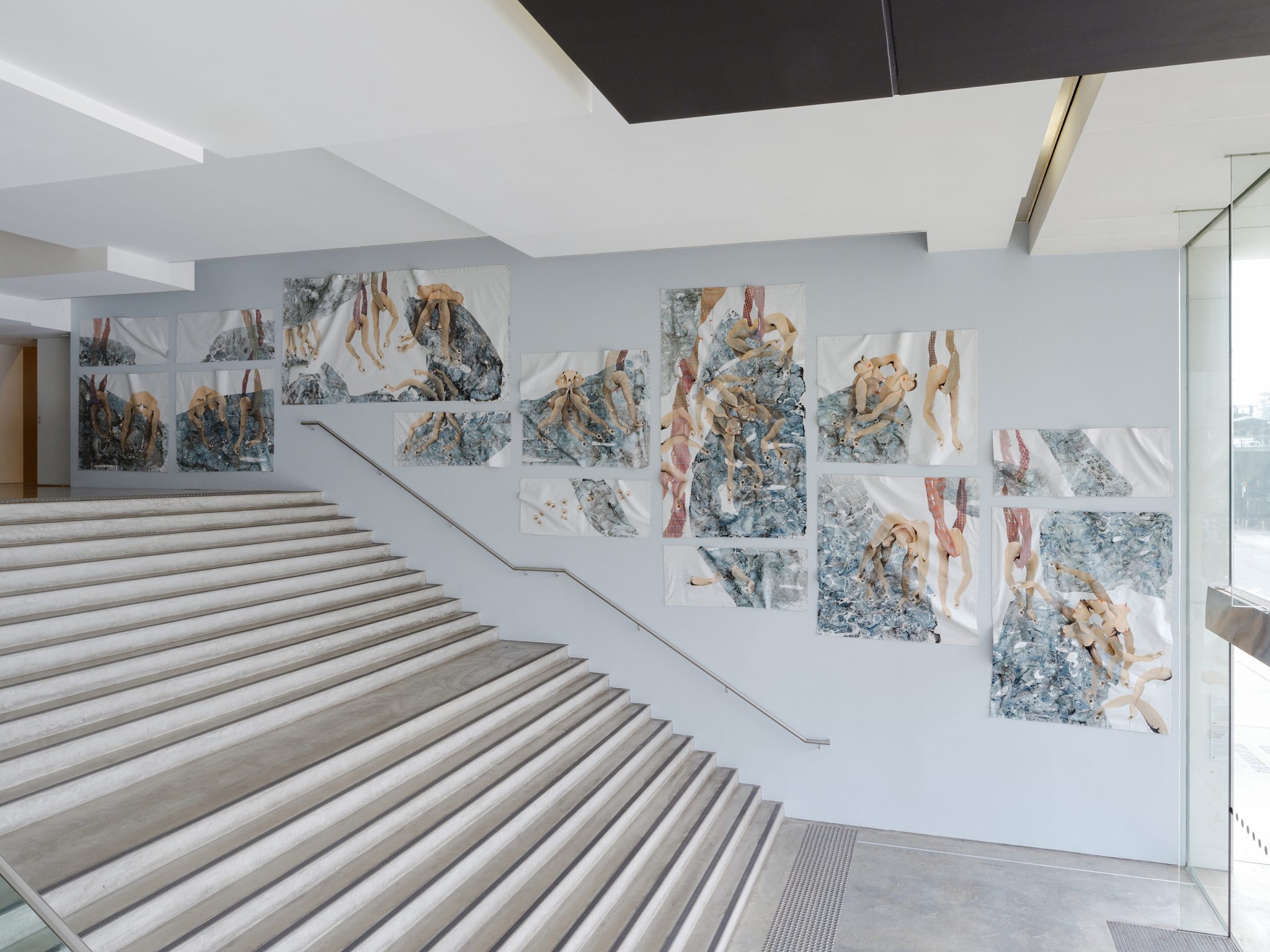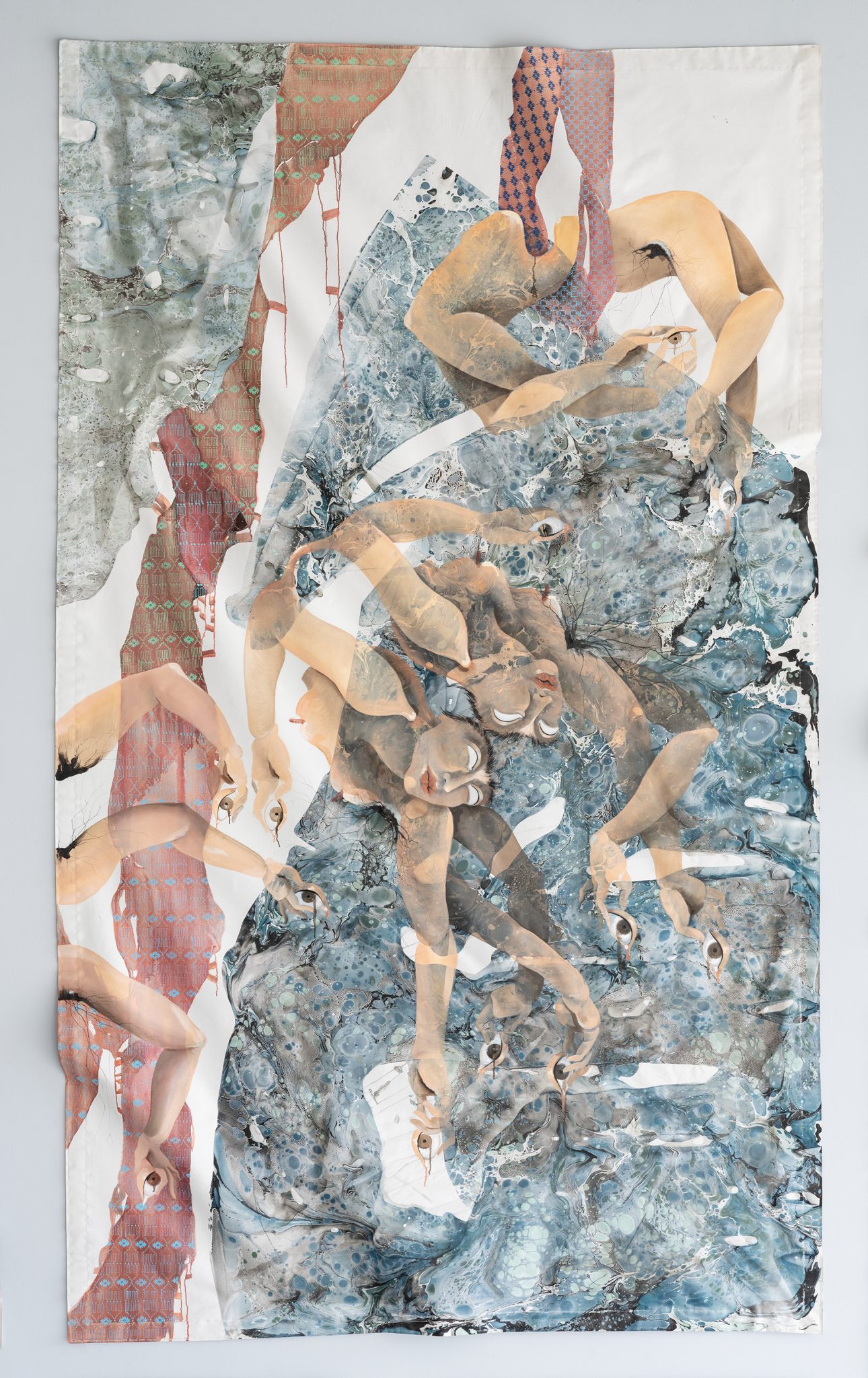

Hayv Kahraman, Bodies of Water, 2023–24, installation view, 24th Biennale of Sydney: Ten Thousand Suns, Museum of Contemporary Art Australia, 2024, oil and synthetic polymer paint on canvas, image courtesy and © the artist, photography: Hamish McIntosh
Co-commissioned by the Biennale of Sydney and Museum of Contemporary Art Australia with generous assistance from the Commonwealth through the Council for Australian-Arab Relations, which is part of the Department of Foreign Affairs and Trade.
Bodies of Water, 2023-2024, oil and synthetic polymer paint on canvas. Co-commissioned by the Biennale of Sydney and Museum of Contemporary Art Australia. Courtesy the artist, Pilar Corrias, London, Jack Shainman Gallery, NY, Vielmetter Los Angeles and The Third Line, Dubai.
In researching Australia’s immigration policy, Hayv Kahraman began to draw parallels between water, migration and the processes of Ebru marbling, a traditional Turkish art form which involves painting on water.
Having been an undocumented migrant herself, travelling via air and on foot, Kahraman was struck by the vulnerability of those fleeing to Australia and Europe by sea. Surrounded by such vastness, new possibilities are offered up, yet the risks presented by open waters are profound. It is well documented that sea-crossings result in many migrant fatalities, the unknown bodies of the deceased disappearing into the same waters that might have been their salvation.
In Bodies of Water, Kahraman, inspired by a self-generating plankton known as the immortal jellyfish, presents these souls as hybrid plankton-ghost creatures haunting the ocean through Ebru marbling. The unique imprint of marbling resonates with human fingerprints, which the European Union stores in its asylum fingerprint database system to surveil those crossing borders. To avoid being tracked, many asylum seekers have erased their own fingerprints by burning and abrasion.
Hayv Kahraman was born in 1981 in Baghdad, Iraq, and now lives and works in Los Angeles. A vocabulary of narrative, gender fluidity, and dynamics of non-fixity found in diasporic cultures are the essence of her visual language and the product of her experience as an Iraqi refugee/come émigré. Through her work Kahraman explores the body as methodology to complicate normative perceptions of what it means to be human today.
Read more about the 24th Sydney Biennale here.



